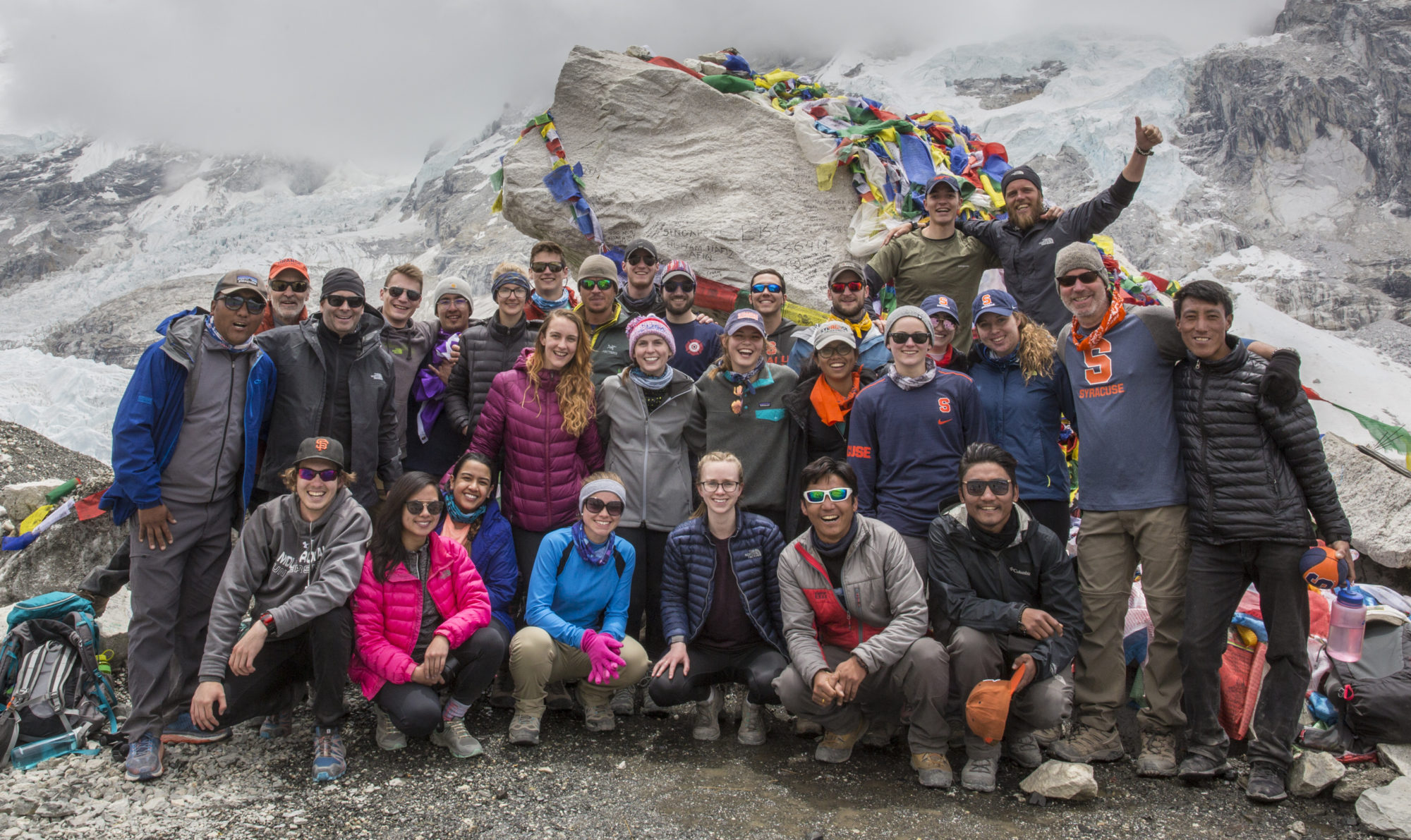The honor of the first “blog-from-abroad” falls to me. Welcome Syracuse colleagues, friends, and family! I am now in Kathmandu after a delightful 24-hours of flying, some of it on the new Airbus A380-800 (from JFK-to-Abu Dhabi). What an amazing plane! It is so big that you can only hear the 30-40 screaming babies in your own immediate section, but not the 260 other babies as they are too far away to be noticed. The first-class section is upstairs and I believe that whole section of the plane lifts off in an emergency i.e., should the misery from coach-class ever waft upwards.
I am in Kathmandu with my friend and colleague Dr. Trevor Day who is an Associate Professor of Physiology at Mount Royal University, Calgary, Canada. Trevor is leading a team of 8 Canadian students and he is the principle investigator on one of our research projects (see below). Together we are making sure everything is ready for the arrival of your kids (and our students) and other team members on Thursday. Today, we will tidy-up base-camp by sweeping away all of the loose stone, and tomorrow we will polish the ice on the Khumbu glacier. We want things to look good for everybody! I will try to get Trevor to clean up the Yeti droppings, but nobody likes that job.
In seriousness, we are totally excited and can’t wait to get this thing started. I thought it might be interesting to tell you all something about the research projects that we have planned on our way to the foot of Everest. Here are some brief descriptions:
- Syracuse University, Cognitive Function at Altitude: One principle impairment at altitude is a decline in cognitive function prior to acclimatization. This may have something to do with alterations in brain blood-flow and hypoxia. Three of our Syracuse PhD students (Dr. Wes Lefferts, Taylor Harman, and Jacob Deblois) are leading this study. They have already measured all of the Syracuse team members pre-departure via a battery of hypoxia-sensitivity and cognitive function tests. Cognitive function and brain-blood flow measurements will continue on rest days all the way to base camp.
- Mount Royal University, Development of Portable Measures to Assess Acclimatization State: A major challenge in high altitude medicine is predicting who will get sick because of the hypoxia. Related to this is the development of portable measurement systems that allow easy field monitoring of the health of trekkers and climbers in extreme conditions. Using novel methods, Dr. Day and his team will be measuring all team members every day of the trek and adding to his growing data base at Mount Royal University.
- University of Michigan, Epigenetics of Altitude Exposure: Two of my long-term collaborators from the University of Michigan (Dr. Abigail Bigham and her PhD student Ainash Childebayeva) are leading this project focused on the control of gene expression as it relates to the acclimatization state of trekkers. Ainash is the driving force for this study, and together we will be collecting saliva and blood samples from most team members to return to the USA for analysis.
- Mid Sweden University, The Mammalian Diving Response and Altitude: What do diving mammals (like seals and whales) have in common with high-altitude mountaineers? They both enter into hypoxic environments/states; the climbers because of the reduced barometric pressure, and the diving mammals because of the extended periods of breath-hold time when they dive. While diving, seals and whales slow their metabolism and take advantage of red blood cells that are stored in the spleen. Humans can do this trick too, believe it or not! This study, led by Dr. Erika Schagatay and Pontus Holmstrup (mid-Sweden University) will test the hypothesis that trekkers with a vigorous mammalian diving response will also do well at altitude. Thus, team members will be tested in Kathmandu where we will be asked to hold our breath like a diving mammal to elicit the diving response. Then, we will be monitored closely for physiological responses and acclimatization state on the way to base camp.
We have a lot to do, and there are many more blog posts to come. I look forward to the posts from our students especially, as they will bring fresh eyes to this amazing experience. Hopefully the posts will give you all a good sense of where we are, what we are doing, and what it is like to move upwards towards Everest Base Camp with a group of 29 trekkers, 10 guides and porters, and 5-10 yaks.
Namaste.
-Tom Brutsaert, Kathmandu, May 15, 2018

Sounds like a lot of work and research will be going on. Wishing you all a safe and happy adventure.
Sending love to you all. Be safe. Namaste.
And an extra night in Abu Dhabi. Yay for the blog!